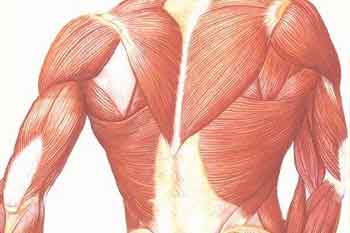
Muscular dystrophies are a constellation of symptoms that make muscles weak and less flexible over time, of which Duchenne muscular dystrophy is the most common form. It is caused by defect in the gene that controls how the body keeps muscles healthy. The disease almost always affects boys and the onset of symptoms begins in early childhood. Children with DMD find it hard to stand up, walking and climbing stairs. Many eventually seek the help of wheelchair to move around. Heart and lung problems can also occur as a consequence of DMD.
Although there is not a definite cure for this disease, the outlook for people affected with DMD has been significantly improved compared to anytime in the past. Years ago, children with this disease are unlikely to live beyond their teens. Today, they live well into their 30s and sometimes into their 40s and 50s with the help of therapies and medications that can provide a sea change in containing the symptoms. Researchers are looking for new treatment modalities to improve the prospect of children affected with this disease.
Causes of DMD
DMD is caused by a defect in one of your genes. Genes store the information your body needs to make proteins, which carry out important bodily functions. If you have DMD, the gene that makes a protein called dystrophin is broken. It is this protein that keeps muscle strong, healthy and protects them from injury. The condition is more common among boys because of the way parents pass DMD genes to their children. That is why the scientists call this a sex-linked disease as it is connected to the group of genes, called chromosomes, that determines if a baby is a boy or a girl. Although it is rare, sometimes people who don’t have a history of DMD in their family can also get affected when their genes get faulty on their own.
Symptoms of DMD
If a child is affected with DMD first signs can come about before he turns six years old. Muscles in the legs usually get affected first, so he will probably start to walk much later than other children his age. Once he can walk, he may fall down quite often and find it difficult to climb stairs or getting up from the floor. After a few years, he might also begin to waddle or walk on his toes.
DMD can also affect heart, lungs and other parts of the body. As the child gets older, he might have other symptoms, including:
• A curved spine, also called scoliosis
• Shortened, tight muscles in his legs, called contractures
• Headaches
• Problems with learning and memory
• Shortness of breath
• Sleepiness
• Trouble concentrating
The muscles problems can lead to cramps at times, but usually DMD is not painful. The child will still have control of his bladder and bowels. Although some children with this condition may have learning and behavioral issues, DMD is usually unlikely to affect a child’s intelligence.
Getting a diagnosis of DMD
First, you should let your child’s doctor know the symptoms you have been noticing. The doctor may ask about medical history. The doctor will give the child a thorough physical exam and some tests may also be done to rule out other conditions that can cause muscle weakness.
If the doctor suspects DMD, he/she will recommend tests like:
• Blood tests
• Gene tests
• Muscle biopsy
Treatment
There is no definite cure for DMD, but there are medicines and other therapeutic interventions like Stem Cell Therapy that can ease your child’s symptoms, protect his muscles and keep his heart and lungs healthy.
Taking care of your child
It is heartbreaking to learn that one’s child is suffering from DMD, but remember that this condition does not prevent him from going to school, play sports and have fun with friends. If you stick to the treatment regime, know what works for the child, you can help him lead an active life.
• Encourage him to stand and walk as much as possible
• Advice him to eat right
• Stay active. Exercise and stretches can keep your child’s muscles and joints supple and help him feel better.
• Find support. Other families with DMD can be a great source of understanding about life with the disease
What to expect
As years pass by, child’s muscles can get weaker and walking becomes increasingly difficult. Many children with DMD need the help of a wheelchair to move around by the time they reach 12 years old. Although some kids live only into their teens, the outlook for the condition is much better than it used to be. Today young adults with this form of muscle weakness can go to college, can work, marry and start families of their own.










